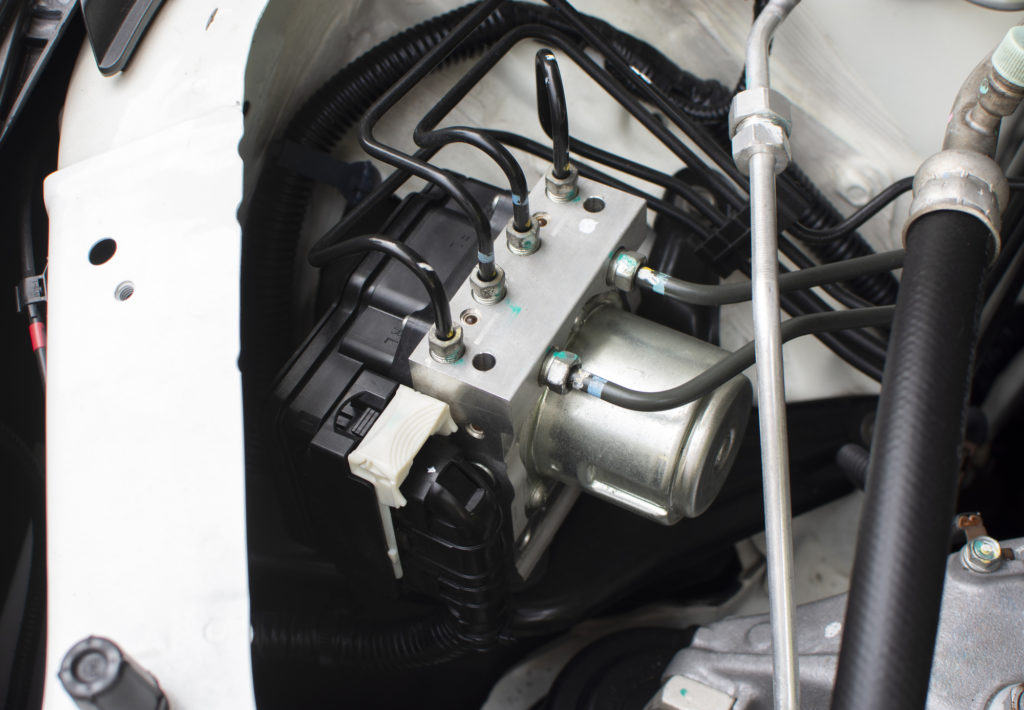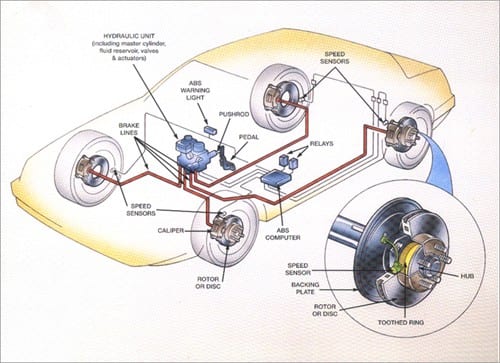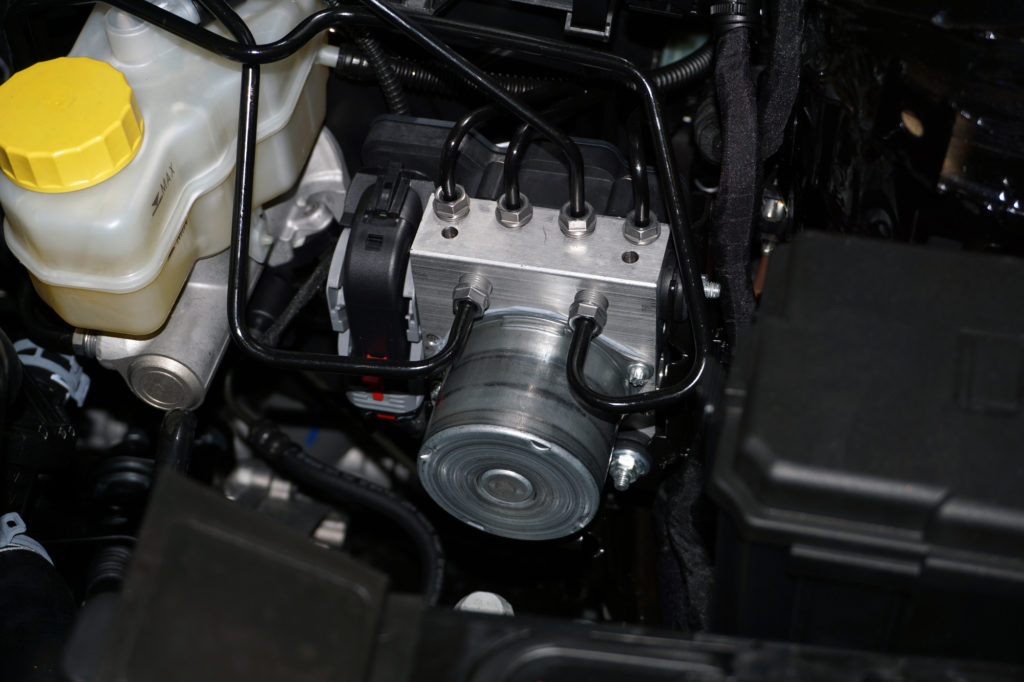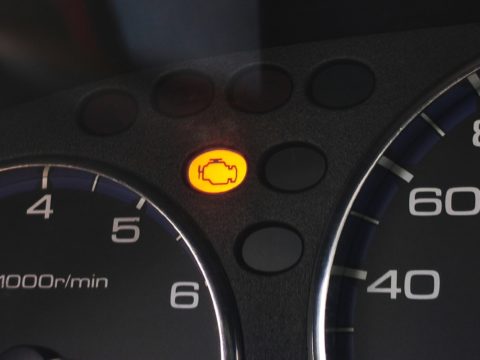The anti-lock braking system (ABS) is a safety feature intended to prevent wheels from locking if you are forced to perform a hard brake.

It is present in modern cars and most often consists of three components: a sensor, a control module, and a modulator (or pump).
Contents
What is the ABS module?
Part of the electronic stability control system, the anti-lock braking system is designed to prevent wheels from locking during heavy braking. This safety feature is comprised of ABS sensors, an ABS control module and a modulator/pump(s).
- The ABS sensors monitor the speed of the wheels and detect locking or skidding.
- An ABS control module receives signals from the sensors to determine whether or not the wheels have begun to lock, or entered a skid.
- In the case of a wheel lock, the ABS control module orders pumps filled with hydraulic fluid to release and reapply the brakes very quickly to help the driver maintain control of the vehicle.
ABS system diagram

Above: Diagram shows speed sensors which are monitored by the ABS computer; which in turn commands the hydraulic unit and valves to pump the brakes to avoid a lock or skid.
Where is the ABS module located in a car?
In many vehicles you can locate the ABS module in the engine compartment. Occasionally it can be found in the frame rail at the left of the vehicle instead.
Components of an ABS control system
Abs module controller
The brain of the ABS system, the control module, is a microprocessor which rapidly processes information from the ABS sensors, running diagnostics to determine whether or not the wheels have started to lock or skid. The ABS control module is responsible for recognising when to pump the brakes.
ABS pump
The pump is filled with hydraulic fluid. It can apply pressure and release multiple times at high speed when directed by the control module. Braking and releasing pressure allows the wheel to rotate and the tyre to regain traction.
Valves
A valve is located in the brake line of each brake controlled by the ABS. These valves change position to block and release the braking pressure. If the valve is open, pressure is applied straight to the brake. The valve can change position to prevent an increase in pressure if the brake is pushed harder. It can change again to release some of the applied pressure.
Wheel speed sensors
These are responsible for measuring how fast a wheel is rotating. If a sensor recognises a wheel is turning too slow, it determines that it is locked and sends a message to the ABS control module. The location of the sensors is typically found in the wheel hub but different vehicles have a different amount of sensors, located in the vicinity of the wheel.
Common ABS problems
Just like any other part of a vehicle, the ABS components are susceptible to malfunction from time to time. This might be detected by the ABS warning light. Some of the more common ABS problems are listed below:
Brake fluid
The moment the ABS light begins to flash, check you brake fluid levels. Just like the engine needs fuel to run, the braking system needs fluid to do its part. The fluid reservoir should be filled to the marker indicated; this is easy to do yourself but a professional can do it if you would prefer.
Damaged wiring
The ABS control module wiring can become damaged or worn over time. If the wiring disconnects it may not be able to send or receive the necessary commands to activate the braking pumps.
A wiring fault should activate the ABS warning light but if it was incorrectly wired to begin with, this might not be the case.
Contamination
The sensors and/or wiring can be obscured by debris or, depending on the environment, the brake fluid may become contaminated. Check for foreign bodies which may cause false or intermittent feedback.
Malfunctioning sensor
All ABS functions begin with the sensor(s) so if one of them stops working properly, it can lead to a whole host of problems. Often the sensors will get covered in dirt and grime from the road and when this happens they should send an error message to the control unit. This will in turn illuminate the warning light, letting you know the sensors need a clean or a replacement.
If the sensors are not cleaned it can lead to several problems, including:
- It will read the wrong speed of a wheel, tricking the ABS into activating unnecessarily.
- It will fail to recognise locked wheels and ABS will not activate when required.
- The sensors will send incorrect information, causing the electronic stability control unit to deactivate traction and stability assist.

Importance of an ABS system in a car
The ABS assists the driver in maintaining steering and braking control. The installation of ABS is an incredibly important safety feature because it prevents the wheels from locking up, enabling the driver to assert control during heavy braking and reducing the likelihood of an accident.
What can a faulty ABS system cause?
If the ABS system is activated unnecessarily it can lead to sporadic and potentially dangerous braking. Alternatively, should it fail to activate when required, the braking system will not engage and the driver could lose control.
It is worth noting that the ABS is designed to work in tandem with the braking system… it was not designed to function as a primary braking system. This means that even if the ABS is faulty, the ‘manual’ braking functionality of the vehicle should remain in tact.
ABS system service and repair
A modern vehicle is fitted with electronic, anti-lock braking systems, which run their own diagnostics and activate a warning light on the dashboard if something needs to be fixed. It is advisable to take notice of the light. It might be something as simple as refilling the brake fluid; or it might be something worth getting a mechanic to take a look at.
Provided they are properly maintained, modern ABS are designed to last for up to 100,000 miles.














